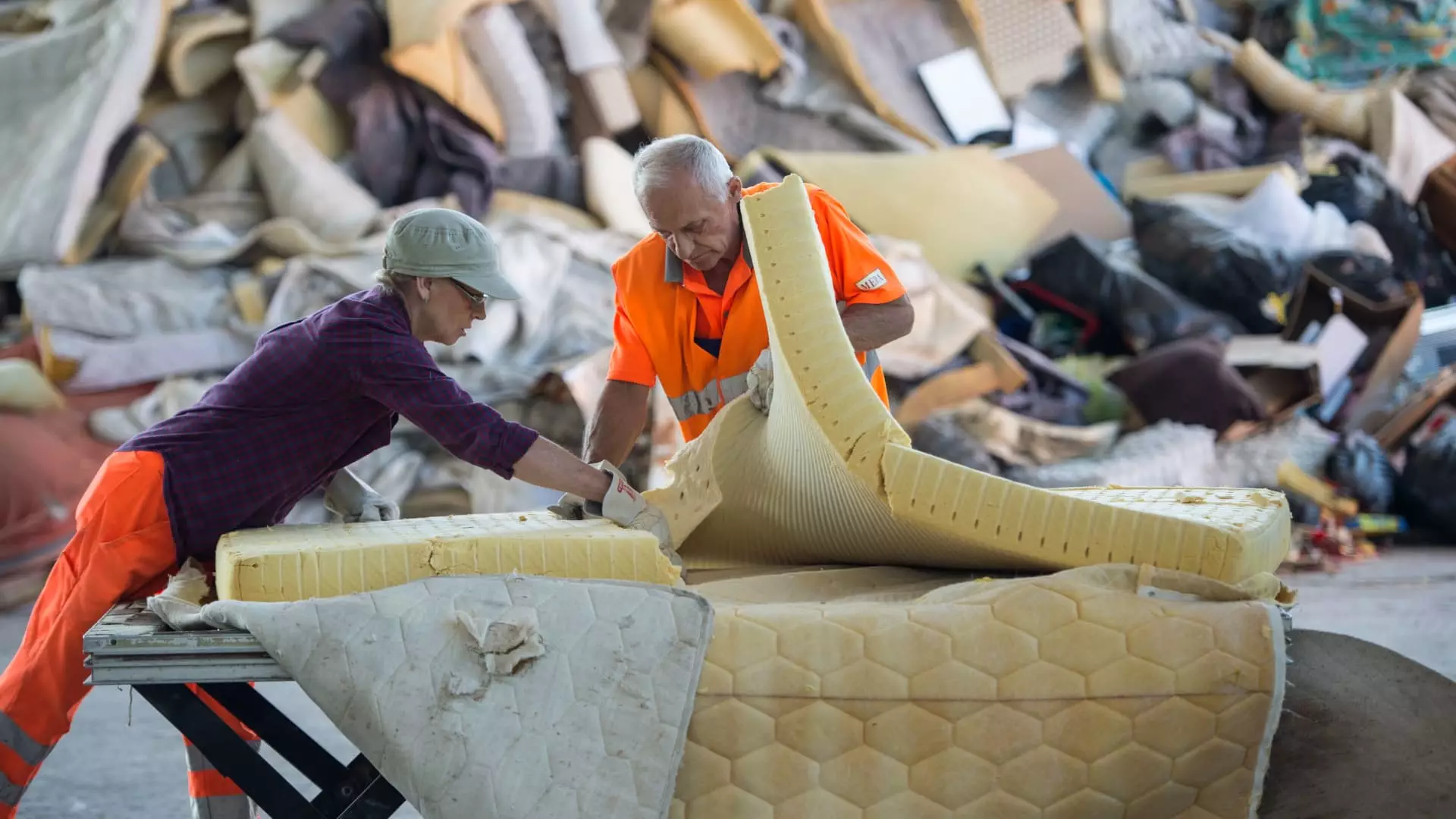As the imperative for sustainable practices intensifies, a small cluster of states in the U.S. has initiated a pivotal shift in how mattresses are managed at the end of their life cycle. The implementation of stewardship fees on mattress purchases is not merely a financial inconvenience; it embodies a concerted effort to promote an eco-friendly recycling initiative while addressing the alarming statistics around wastefulness in the mattress industry. This article will delve into these initiatives, evaluate their efficacy, and explore their potential influence on other states.
Every year, consumers in the United States discard an estimated 15 to 20 million mattresses, which translates to nearly 50,000 discarded units each day. The Mattress Recycling Council (MRC) highlights that a staggering three-quarters of a mattress is recyclable, comprising materials such as wood, steel, foams, and fibers. However, the current state of mattress disposal predominantly leans towards landfilling, which represents a significant loss of reusable resources and contributes substantially to environmental degradation.
The imposition of sales fees in states like California, Oregon, Connecticut, and Rhode Island seeks to tackle these statistics head-on. These fees, which vary from $16 to $22.50, are applied to every mattress or box spring purchased, whether online or in physical retail settings. The collected funds are earmarked for recycling programs aimed at diverting these discarded mattresses from overcrowded landfills.
Oregon, for example, adopted a specific “stewardship assessment” charge on January 1, 2023, creating a straightforward financial approach to promote recycling. This program extends beyond merely charging consumers; it also strives to enhance accessibility to recycling services. By establishing collection points across counties and fostering job growth in the recycling sector, Oregon’s initiative sets a robust example of how state-led efforts can invigorate an industry that has lagged in adopting sustainable practices.
Retailers play a critical role in this ecosystem by passing on collected fees to the MRC, which manages the funds and operational aspects of these recycling programs. This symbiotic relationship illustrates the principles of Extended Producer Responsibility (EPR). Under EPR frameworks, producers are tasked with the repercussions of their products once they become waste. By making manufacturers accountable for their products’ life cycles, these programs help fund an infrastructure designed to manage waste responsibly.
Despite the progress made in states with established mattress recycling initiatives, the broader landscape across the nation reveals stark challenges. In states without such regulations, consumers find themselves remarkably limited when it comes to responsible disposal. A mere 58 companies nationwide are listed as authorized recyclers for mattresses, which often leave consumers to resort to inconvenient and potentially costly alternatives like private drop-off services or curbside pickup. This limited access perpetuates a cycle of wastefulness and hinders the growth of a responsible recycling culture.
The difference in recycling infrastructures highlights the disparities in environmental policy across states. Consumers in non-participating states may end up paying exorbitant fees for recycling or simply choose to dispose of old mattresses irresponsibly, leading to increased illegal dumping practices and associated environmental concerns.
The traction gained by mattress recycling initiatives has prompted discussions in several additional states, including Massachusetts, Maryland, New York, and Virginia, about potentially establishing similar programs. This trend signifies not only a shifting attitude toward waste management but also a broader understanding of environmental stewardship emanating from government policy and consumer awareness.
As policymakers and communities become more aware of the significant environmental impact associated with discarded mattresses, the hope is that these initial four states will serve as a model for further legislation across the country. If successful, the movement could lead to comprehensive national standards for mattress disposal, inspiring innovation and collaboration within the industry to meet environmental demands.
The policy initiatives in place represent a critical step forward in transforming how we perceive mattress disposal. While challenges remain, these state-led efforts exemplify how sustainable practices can be integrated into consumer behavior through thoughtful legislation. As more states consider similar strategies, the promise of a more eco-friendly and responsible mattress industry becomes increasingly tangible.

